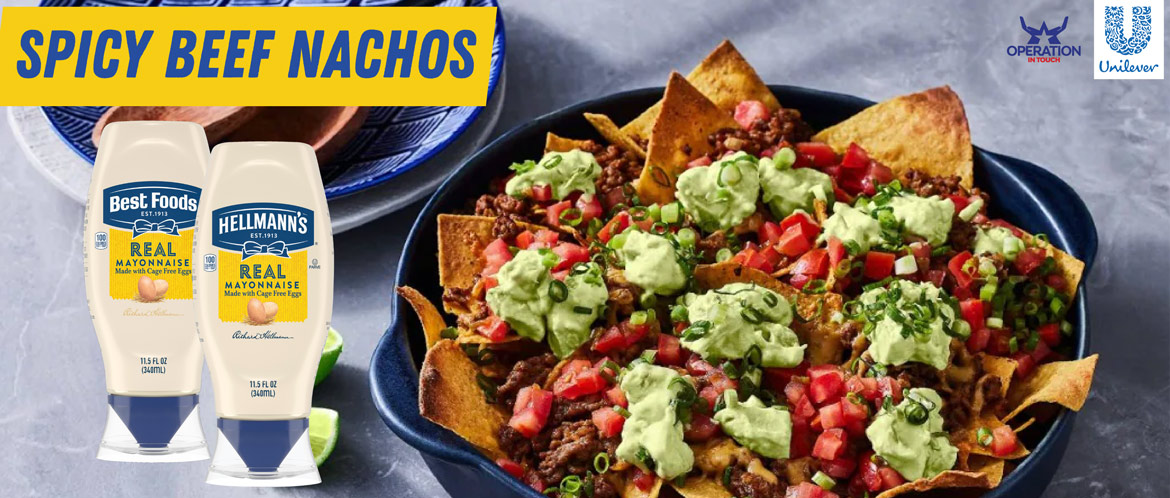
Food Waste Action Week Tips & Recipes
Join us for Food Waste Action Week as we showcase Hellmann’s and Best Foods Mayonnaise to #maketastenotwaste! Learn how you can save money and food by following these helpful tips! You’ll also find tasty recipes at the bottom to make delicious meals with what you have in the fridge! (Links open in new windows.)
Easy Ways to Reduce Food Waste
No one likes to throw out the bunch of wilted spinach we forgot in the back of the fridge, or a half loaf of moldy bread that we couldn’t quite finish in time. Other than some hard-earned dollars going to waste, how much of an impact could it really have? Turns out, a lot.
How much food is wasted in the US?
In the United States alone, 35% of all food produced goes to waste. This loss is valued at $408B, the same amount of money the federal government spent on programs for children in 2019, or to put another way, almost ¼ the amount of the recent stimulus bill. This problem not only causes financial waste, but it also comprises 14% of water use and nearly 20% of our crop land.
WHAT ARE THE SOLUTIONS TO FIX THE PROBLEM?
- PREVENTION means avoiding food from going to waste all together, including all of the water, fertilizer, labor, gas, money and other resources it takes to grow, process and transport food. Prevention solutions include things as simple as purchasing imperfect foods, standard date labels, using smaller plates and making smaller portions.
- RESCUE means getting food that’s already been produced to food banks and food recovery organizations for those in need. Food rescue can also mean “upcycling” which involves making an entirely new food product from surplus or remnants.
- RECYCLING means turning decomposing food into a valuable end product like nutrient rich compost for agriculture, or biogas for trucks and city buses.
In our journey to understand the food waste landscape, we have found that approximately 70% of people globally agree “avoiding food waste” has become more important in their lives – almost as important as “eating healthy 1. However, people don’t yet acknowledge that they are part of the problem. 73% of Americans say they waste less than the average American 2. ReFED has uncovered that in the United States, approximately 40% of all food waste occurs in our homes 3.
ReFED’s analysis of the top prevention, recovery, and recycling solutions shows that 13.2 million tons — over 20% of annual food waste — can be reduced over the next decade in cost-effective and scalable ways.4
5 ways to reduce food waste at home
Even though wasted food is a major problem – there are so many exciting and creative ways you can be part of the solution. Things to try:
- Download the food waste app “Fridge Night” where one night a week you’ll learn how to make delicious recipes with leftover food you have in the fridge.
- Buy the ugly fruits and veggies you see at the grocery store and when you get home, freeze anything you don’t have a plan to eat this week.
- Set up an “eat first” bin in your refrigerator for leftovers and partially cut fruits and vegetables so you remember to eat them before they go bad.
- There are some foods that are more wasted than others. Use our tips for ensuring these most wasted foods in our homes are put to good use.
- Compost your food scraps and coffee grinds in your backyard or drop them off at your local farmer’s market.
What are the benefits of reducing food waste?
Reducing food from going to landfills is important for a variety of reasons:
It increases the availability of nutritious food to those in need: One in six Americans are food insecure. By limiting the amount of safe, nutritious food that goes to landfill or is left on farms, we are able to provide more food to those in need through food banks and other food recovery organizations. If we reduce food waste in by half, it would generate 4 billion meals annually for our fellow Americans.
It helps fight the climate crisis: According to the EPA, 24% of our landfills are filled with food and organic waste. As this food rots in open air, it emits methane, a potent greenhouse gas that contributes to global warming. By limiting food waste, we are directly reducing the greenhouse gases coming from landfills.
It saves money and creates jobs: Reducing food waste leads to an efficient food chain that means better access to more affordable food. Through the expansion of recycling infrastructure and new food product development and other innovations, we can create 51,000 new jobs over the next decade.
Find out more about how Hellmann’s & Best Foods are fighting food waste with a wide range of partners to help shape the change we want to see!
[1] Hellmann’s Purpose Toluna Global Review, US, UK, BR, ARG – 2018. / Edelman Food Waste Global Study, 2017 / NRDC Report US.
[2] https://www.ncbi.nlm.nih.gov/pmc/articles/PMC4465675/
[3] https://www.refed.com/?sort=economic-value-per-ton
[4] https://www.refed.com/?sort=economic-value-per-ton
Read the original article by clicking here. (Link opens in new window)







